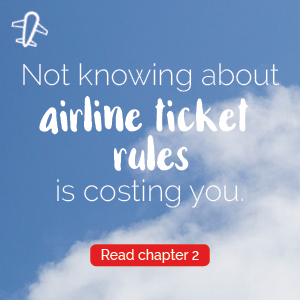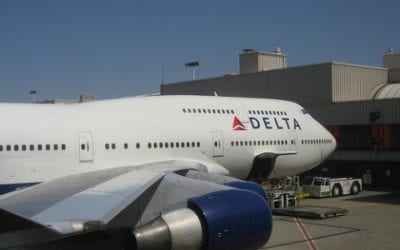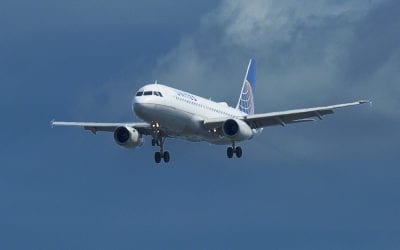The consumer airline alliance benefits, once touted by DOT, have disappeared or are on their way out. Now, airline alliances are acting like monopolies — building fortress hubs, hoarding gates, landing and take-off slots, and excluding competition.
The new airline alliance landscape is far worse than it was prior to the world of airline alliances and antitrust immunity. The demise of consumer benefits and the creation of quantifiable consumer harm is 
When the Department of Transportation (DOT) embraced the airline alliance world, the benefits of lower airfares, better onward connections, shared frequent flier programs, and common executive flight lounges were all talked up as benefits. Today, that vision is being dismantled by the airlines.
- Choice has been limited.
- Passenger amenities are limited.
- Baggage transfers are being curtailed.
- Intra-alliance frequent flier mileage earning opportunities are being cut back.
- Onward connecting flights on different alliance airlines are more difficult.
If customer service was a justification for airline alliances, DOT should reexamine the creation of these alliances. The world of three airline alliances controlling transatlantic travel is not as rosy as envisioned by DOT. In fact, the old world may be better.
Three alliances dominate
In the pre-airline alliance world, a score of airlines competed with each other across the Atlantic. Each of the airlines battled against each other based on routes, schedules, and customer service. Today, only three airlines control more than 80 percent of the transatlantic market and competition between the US and the fortress hubs of Frankfurt, London, Madrid, Paris and Amsterdam have been all but eliminated.
The USA-to-Britain routes are dominated by oneworld, made up of British Airways and American Airlines with their antitrust immunized joint ventures. The same for SkyTeam, that includes Delta, and Air France/KLM control the US and Paris and Amsterdam hubs. And, Star Alliance, linking United together with Lufthansa, Swiss and Austrian, commands in the German speaking countries. Where are the consumer airline alliance benefits?
International airline connections are more difficult
The alliances are now beginning to stop transferring baggage from alliance to alliance in an attempt to force all connecting flights to stay on a single alliance route. Some airlines have even limited intra-airline transfers. These actions will add hours to schedules with connecting flights when passengers will have to exit customs and security, pick up baggage, travel to a different terminal, check in for an ongoing flight, return through the security checkpoint, and then board the connecting flight.
Rather than creating a benefit for consumers of additional international destinations, passengers have been harmed by the reduction in interline agreements, and even with intra-alliance limits, on through check-in and baggage transfers put into effect this summer.
Before the DOT decreed benefits of airline alliances, interline agreements allowed passengers and luggage to easily be transferred at every major airport in the world. Today, airlines are purposely making it difficult in order to drive out competition. In the old days, all airlines needed strong interline agreements in order to compete with each other. That competition has been turned on its head. Where are the consumer airline alliance benefits?
Lufthansa’s first class club excludes other alliance partners
Airlines have formed exclusive lounges that are off-limits for most alliance members. The poster child for these super-exclusive lounges is the Lufthansa first class terminal. Note the word “terminal.” This is not only a club, but a separate terminal designed so that the super elite travelers will not have to rub shoulders with the hoi-polloi, or common man.
In this sanctuary terminal, first class passengers are treated to gourmet meals on demand, showers, massages and much more. The service includes transfers to planes by a fleet of luxury cars.
Other alliance partners are forbidden entrance and are relegated to the normal executive lounges where they sit with business class customers, heaven forbid! Where are the consumer airline alliance benefits?
Frequent flier programs and benefits are not shared equally
Frequent flier programs have devolved into a complex collection of different awards based on individual alliance members. Miles earned on alliance partners are only credited to accounts as a fraction of the total miles. In the old days, a mile was a mile, no matter which airline a passenger used, and frequent flier programs negotiated with each other for the best deal for their members.
Airline analysts claim antitrust immunity and alliances do not affect airline stock prices
Finally, at the Airlines for America Commercial Airline Summit held in Washington, DC, earlier this week, airline analyst dismissed lack of competition claims for international flights. Hunter Keay, a managing director and senior analyst covering the Airline and Aerospace & Defense sectors, claimed, “Antitrust immunity (ATI) is hardly anything to investors.” In this case, airlines should welcome an examination of airline alliances and antitrust immunity.
DOT should take another look at supposed benefits to consumers from alliances
It is time that DOT take another look at consumer airline alliance benefits. Their consumer benefits have become consumer harms both to individual travelers and to the international airline economy by creating de facto mergers complete with fortress hubs and limited competition — everything the alliance world once promised to do away with.
Photo: www.flickr.com/photos/ajw1970/14320753093/

Charlie Leocha is the President of Travelers United. He has been working in Washington, DC, for the past 14 years with Congress, the Department of Transportation, and industry stakeholders on travel issues. He was the first consumer representative to the Advisory Committee for Aviation Consumer Protections appointed by the Secretary of Transportation from 2012 through 2018.



